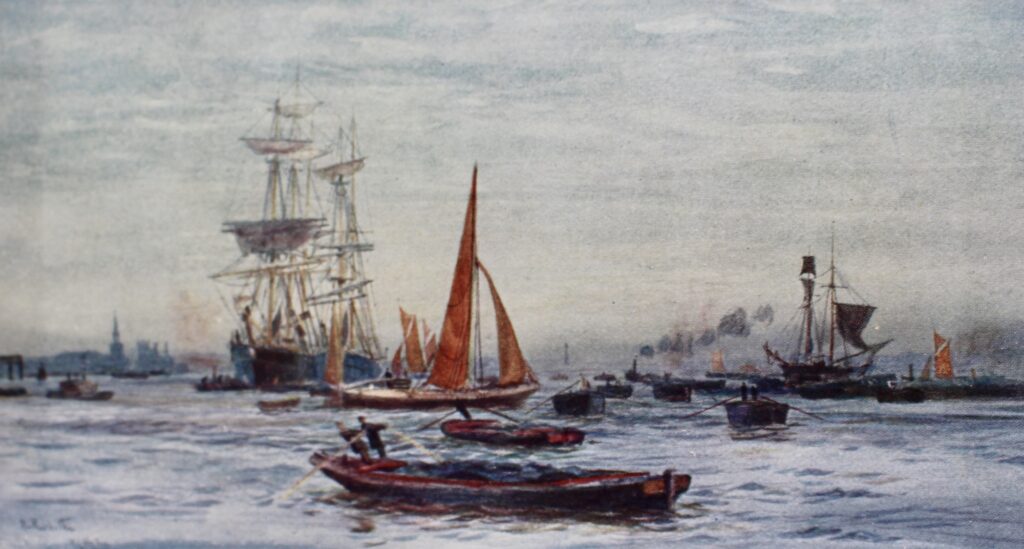
Part One of my article on W.L.Wyllie’s paintings from the book London to the Nore, 1905, covered the stretch of the Thames from Westminster to Tower Bridge. The paintings posted here follow the river from Tower Bridge to Belvedere. Along this stretch, as throughout the book, Wyllie’s pictures are accompanied by his wife Marion’s descriptions of their journey. Her writing draws the reader in, and I have chosen a few pieces for this next section to give you a feeling of the river as she saw things: its beauties, its less attractive though always interesting aspects, and how busy it was.
“Irongate Wharf […} is between Tower Bridge and the gates to Saint Katherine’s Dock [sic], which is surrounded by tall warehouses, so that only the masts of the ships can be seen from the river. These docks have the trade in wine and brandy, tobacco and rice, and for years were the rivals to the East and West India Docks.” Unlike today, when most goods arrive anonymously in containers, Marion notices a whole variety of merchandise waiting for distribution, “the quays piled with great new wine-barrels, currants, slates, corks and Spanish onions.” And a nice detail: “In one corner stands the Queen’s pipe, where all the contraband tobacco seized is burnt.”
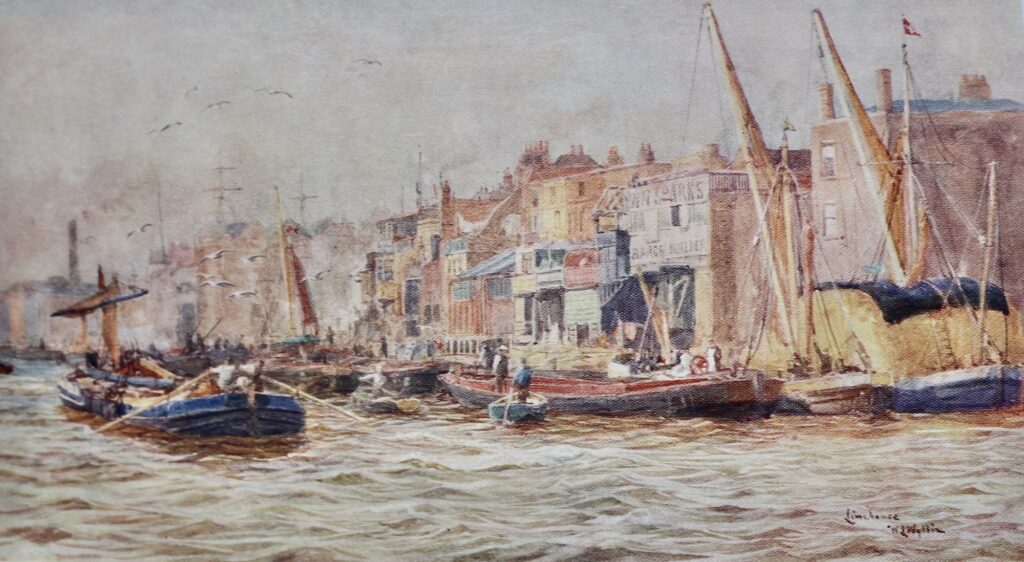
As they sail past Limehouse, a favourite spot of Whistler’s, Marion remarks that “for a short part of its frontage, it has the quaintest group of houses to be found up or down the river. […] They are small, very narrow, and squeezed tight against one another, each painted in a bright contrasting colour; they have little balconies full of flowers, old world bow-windows, and odd storage places below. From the top of more than one flies the family washing.”
Turning again to the river she sees “more and more craft come crowding up [with the tide] pushing their way among the drifting dumb barges.” Among them: a Swedish ship carrying timber; a red and black fruit steamer; tugs with long winding tows of coal lighters; sailing barges; steamers from the General Steam and Netherlands Companies “some with big rope fenders artfully slung across their stems close to the water, so that they can push their way through the drifting dumb craft when there is no lane of open water to steer for; and on the Rotherhithe bank, Guernsey schooners shooting broken granite into dumb barges.” She describes watermen and bargees at work, their rowing skills and their repartee “at this they beat cabmen hollow”, and brings the varied sounds of intense river activity to life: myriad calls; rattles; anchor chains crashing as they’re let go; clanking of windlasses; the clang of shipwrights’ and engineers’ hammers, groans and creaking, the plash of oars, and a whole symphony of sound echoing across the water. And beyond, on Plumstead Marshes, heavy guns booming on the practice range. It is easy to imagine her sitting on deck writing descriptions in real time.
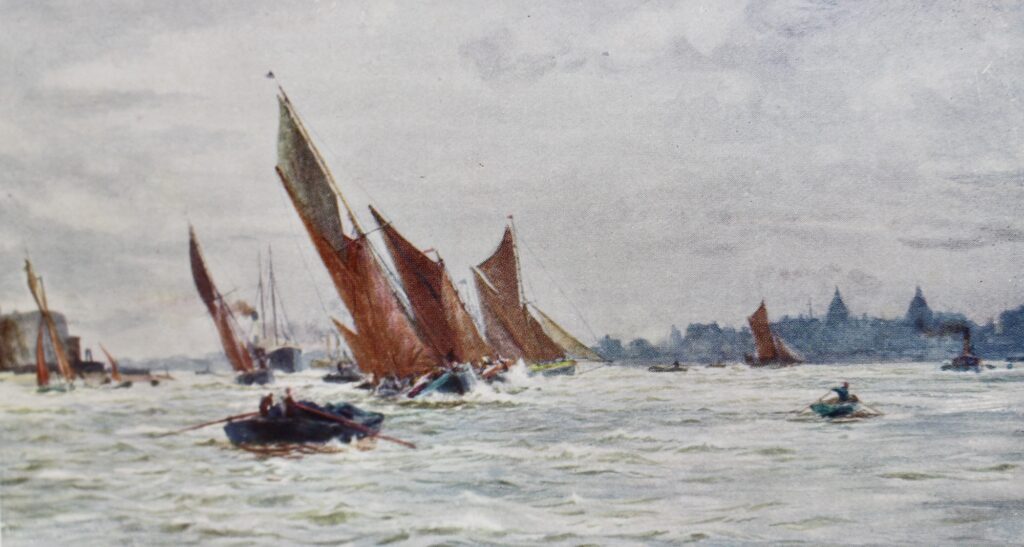
There were quieter moments too. Marion describes an afternoon moored off Greenwich where her husband is working and the family are spread about “sitting comfortably on deck, each one at his own or her own pursuit.” She conjures up the scene so well. There “are Corbett’s sheds, with boats of all kinds on hire, from which a waterman has pushed off with a baby girl dressed in pink flannelette gravely sitting in the stern hugging a doll.” Turning, she sees “a grubby-looking old man with an ancient boat with a great part of her bulwarks torn away, and he has to put a list on her to keep the wounded side out of the water. […] Three or four small boys rush down to the shed to meet him; they jump on board with a fine model yacht, which, when put in the water, sails off a a great rate.”
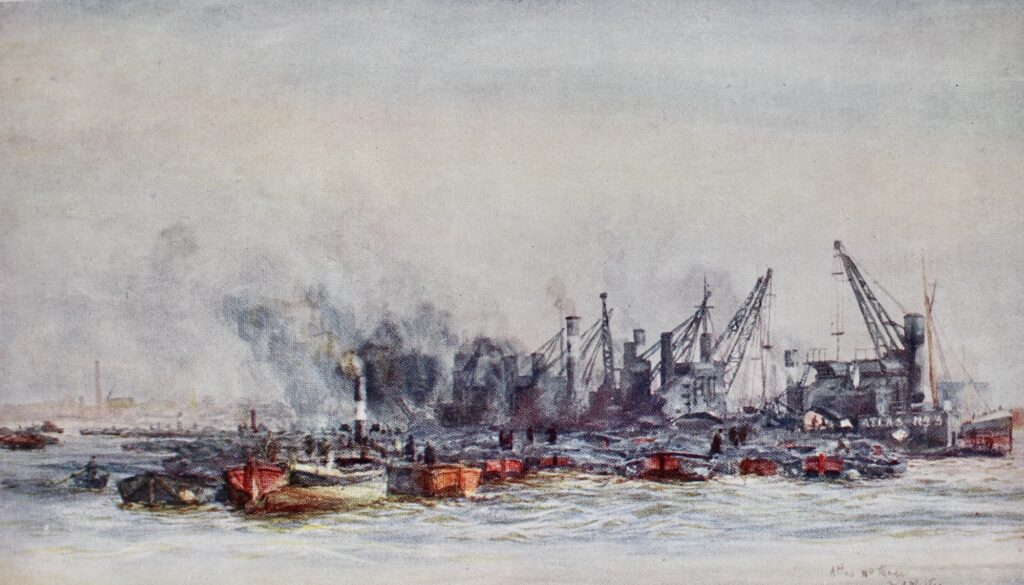
Just as Wyllie was interested in recording the industrial stretches of the Thames, his wife took the trouble to explain some of the structures. Atlas No 3 in the painting above was a floating pontoon with ten or twelve cranes on board whose hydraulic arms dropped ‘giant claws’ into the holds of the colliers, grabbing the coal and swinging it round to let it fall into the barges on the other side. Tugs would then tow them on to their destinations, providing fuel for London’s industries and homes.
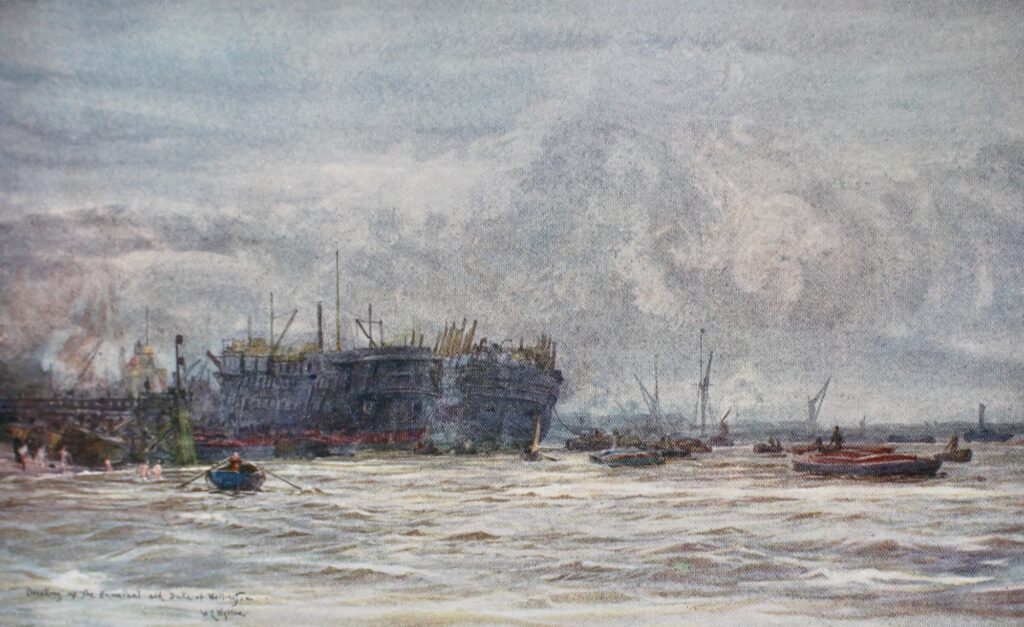
The busy scene of Castle’s ship-breaking wharf not only caught Wyllie’s attention but his wife’s as well. She was particularly struck by the breaking up of The Duke of Wellington, Admiral Sir Charles Napier’s famous flagship. She writes: “She is here – a mere husk of a ship. The graceful sheer of her line of ports has drooped away; and her bow, from which the figure-head has been cut, grins noseless like a skull. All round the poop her ribs stand naked to the sky…”
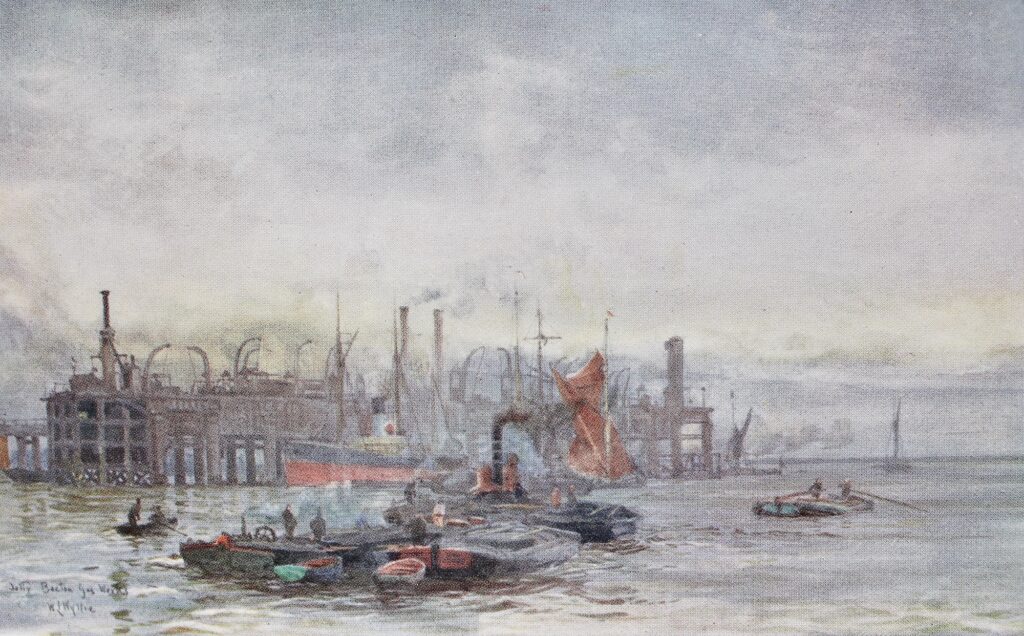
Marion also records the variety of smells on this stretch of the river including: the pungent odour of the chemical works “catching you in the throat”; Peruvian guano; Dundee marmalade; and “the great gasworks on Lea Ness pouring out a savour all of its own”. As they anchor on ‘Bugsby’s Reach’ among a large group of coal barges from where Wyllie can draw a view that has caught his attention, the air is thick with coal dust. But Marion doesn’t mind: “It will wash off”. However she is less enamoured of the stink emanating from a number of industries “that make dreadful smells” particularly of “some tall chimney-shafts. Even at three miles away the sickening reek makes you feel bad.” And then there were regular releases of noxious untreated sewage into the river. On the night of September 3rd, 1878 this pollution added a tragic dimension to the collision between pleasure boat SS Princess Alice and collier Bywell Castle in Gallions Reach, for not only were some of the 640 victims drowned at the time, many died later from infections picked up from the contamination of the water.

Marion was a keen observer of all aspects of life along the Thames. She records much of its history, its architecture, and details of surrounding towns and villages. Yet, even if most of it has been swallowed up or smoothed down by time, there is still enough in her observations to strike a chord with those who know the river well.
Further Information
White Dog Gallery where you can discover some of Wyllie’s work for sale.
W.L. and Mrs Wyllie: London to the Nore